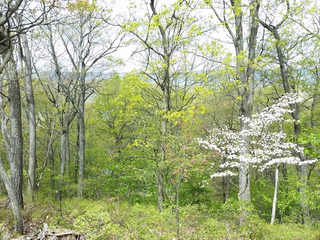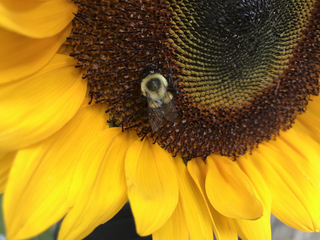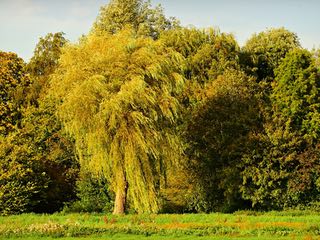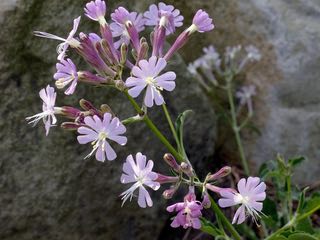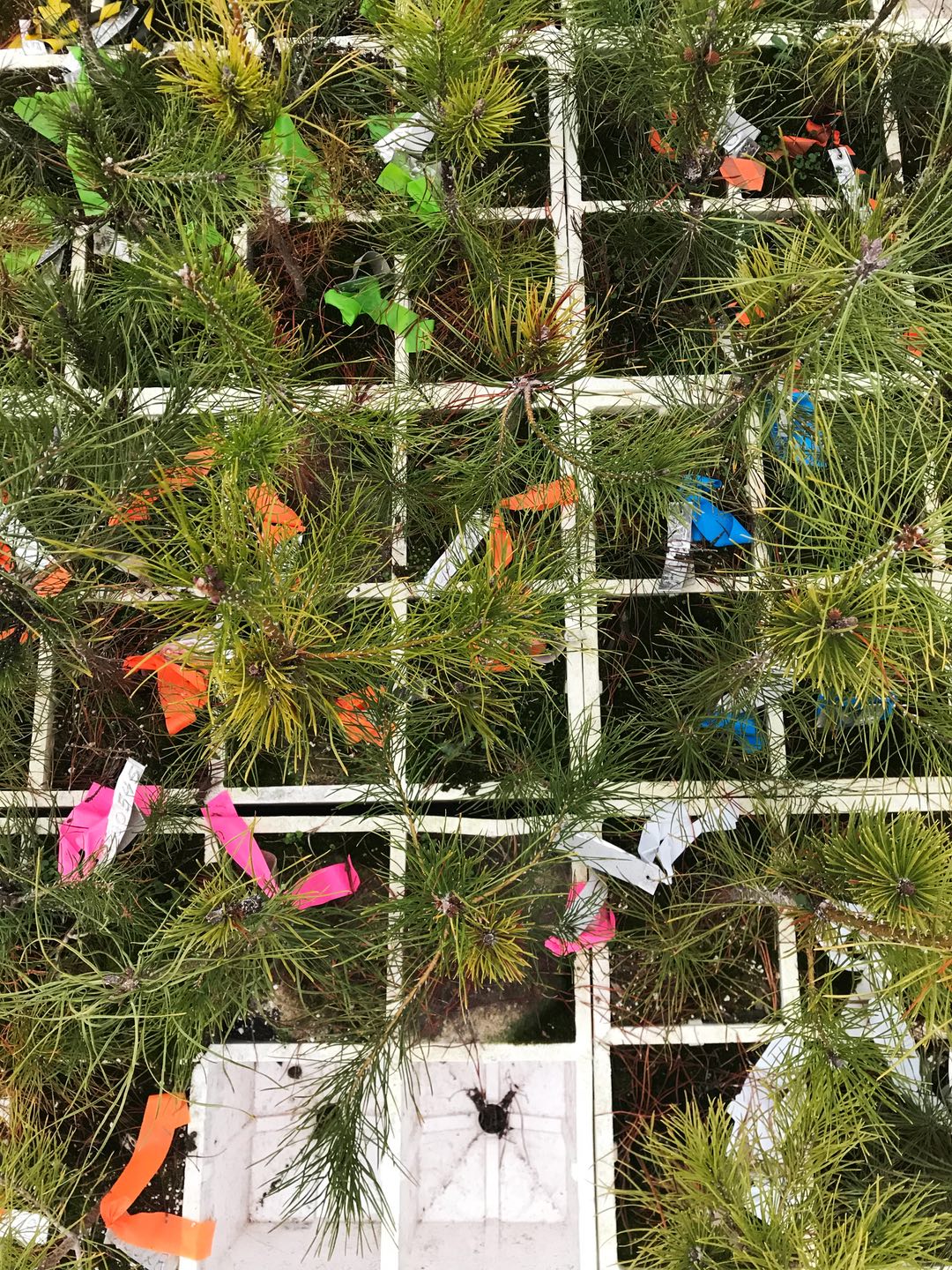
Photo © Lauren Oakes
How to Plant the Forests of the Future
In the past, forest restoration could be informed by what once was. Now we have to make hard decisions about what we’re working toward.
By Lauren E. Oakes
Sign up for our monthly newsletter!
I am standing inside a freezer that bears no resemblance to any other freezer I have ever seen.
From the outside, it appears as a massive concrete structure with excessively large doors adjacent to more buildings, all similarly prominent on the concrete landscape. Inside, trying to take notes while shivering at minus five degrees Celsius, I peruse the aisles. They are formed by white and brown boxes stacked high above me.
“This year we’re storing 164,696 cartons,” announces Sheilagh Fitzpatrick. She is the office manager of Hawkeye Holdings Ltd., a family-run business in Kelowna, British Columbia, and the largest freezer storage facility in the province. Sheilagh checks the numbers on a piece of paper and adds, “That amounts to 49,183,963 trees.”
I run my fingers across the boxes and investigate their labels. She selects one to decipher the codes—their history and their future, where they came from and where they’re going. “It’s a well-traveled lot,” she notes. From their original sources to their final destinations—through seed collection, to nursery cultivation, storage and planting—this crop will travel more miles than any other in the past. Storing seedlings for the winter in a dormant state enables foresters to plant more across seasons; they start on the coast when spring arrives, move to the southern interior, then work their way north, and, eventually, upward in elevation as the snow melts.
These seedlings are part of a province-wide program to assist the migration of climate-adapted trees. Currently voluntary for foresters, transferring seedlings in anticipation of future climate conditions will soon become mandatory.
“So, these are the forests of tomorrow?” I ask, as she guides me down another row. “Exactly,” she replies.
The apparent simplicity of planting trees to suck carbon out of the atmosphere belies a tremendous amount of complexity.
I have come to Canada to learn more about climate-based seed transfer. It’s an innovative adaptation strategy for promoting healthy forests over time, based on matching seedlings to the projected climate of planting sites. I’ve come to see the next generation of white spruce, Douglas fir, and western larch to understand how and why scientists determine the locations for planting various species and populations. But I have traveled here also because I am thinking about the billions of trees planted globally. I wonder about their fate and what their death or survival means for our ability to combat the climate crisis itself.
Nature-based solutions could deliver more than 30 percent of the emissions reductions needed to keep climate change under two degrees Celsius, but they have received far less than their due share of the global mitigation dollars. That’s beginning to shift. The United Nations’ Trillion Tree Campaign has tracked about 14 billion trees planted across 193 countries since the campaign’s inception more than a decade ago. But over the past year, the global tree-planting drive has shifted into a higher gear. In March 2019, the UN General Assembly adopted a resolution to enter the Decade on Ecosystem Restoration. It outlined targets to reverse the loss of forest cover worldwide and highlighted the many ways that forests can help people cope with the future consequences of climate change. In the wake of the resolution, national commitments to protection and planting ramped up. Countries in Mesoamerica launched an initiative to protect and restore the region’s five great forests. Others, such as Kenya and Colombia, committed to planting millions of trees. The government of New Zealand set a target of doubling the current planting rate to reach 1 billion trees planted by 2028. In July 2019, Ethiopia planted over 350 million trees in a day, setting what officials believe to be a new world record.
The sheer ambition of the movement has created some rather strange bedfellows. Greta Thunberg, Shell Oil Company, the United States Department of Defense, and the International Union for Conservation of Nature (IUCN) have all gotten behind efforts to increase tree cover. Even Donald Trump announced a commitment to the Trillion Tree initiative in his 2020 State of the Union address. Yet those looking for magic bullets for solving the climate crisis are likely to be disappointed. The apparent simplicity of planting trees to suck carbon out of the atmosphere belies a tremendous amount of complexity.
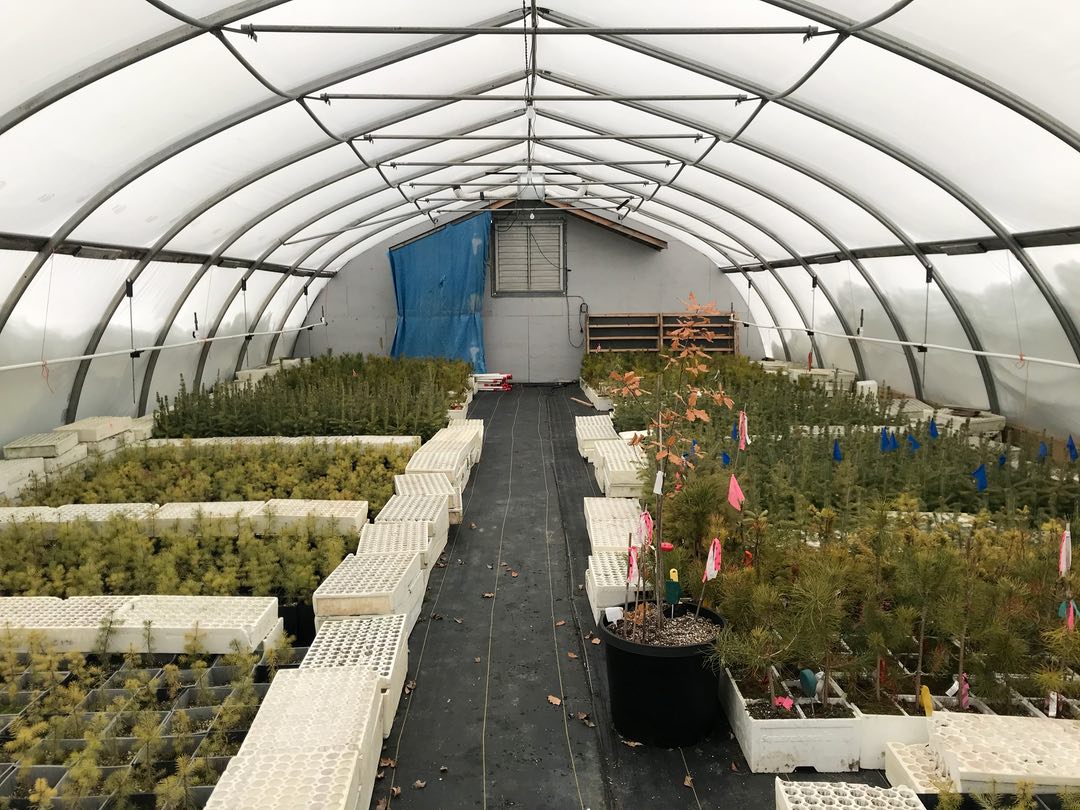
Photo © Lauren Oakes
Last summer, a team led by Jean-François Bastin, a young scientist at ETH Zürich in Switzerland, published a study in Science that offered a case in point. “The Global Tree Restoration Potential” was its title, but the line that hit the news and sparked rebuttals across the world asserted that “ecosystem restoration [is] the most effective solution at our disposal to mitigate climate change.”
If we’re counting on the trees we plant to thrive into the future, and to continue to draw carbon from the atmosphere, getting the seed source as well as the species right is critical.
The authors mapped the Earth’s carrying capacity for trees (which they found to be 0.9 billion hectares, about 20 times the size of California) and then calculated that such an increase in forest cover could absorb 200 gigatonnes of carbon—roughly the equivalent of two decades of global carbon emissions at the current rate. Thomas Crowther, coauthor and chief advisor of the Trillion Tree Campaign, told reporters that the Earth could sustain another 1.2 trillion trees. The study’s results, widely circulated by media and promoted by the research team, brought forth a flood of critiques. For one, some of the regions identified by Bastin and his colleagues for tree planting had not been previously forested. Calculations in these areas overestimated the potential benefits, given that these lands were considered to contain no carbon. Methods and numbers aside, carbon-focused tree planting in savanna, grasslands, and shrublands (afforestation, as opposed to reforestation) could also threaten species-diverse biotic communities in these habitats as well as people, who depend on grasslands, for example, to provide livestock forage, game habitat, and groundwater or surface water recharge.
Some critical environmental constraints were also not taken into account. Soil salinity and moisture limitations could prevent tree establishment, for example, in parts of Australia and other arid regions. Moreover, there were considerations of more than 2.5 billion people living in areas that were determined to be eligible for restoration. Robin Chazdon, an ecologist and evolutionary biologist, noted the study didn’t consider negative tradeoffs; in some places, increasing tree cover can elevate fire risks, decrease water supplies, or cause crop damage by wildlife.
A group of scientists commenting in The New York Times warned that focusing on trees as the big solution constitutes a “dangerous diversion.” Planting trees, they said, can contribute to a long-term climate solution, but it doesn’t alleviate the pressing need to reduce pollution from fossil fuels.
Although trees alone can’t solve the climate crisis, strategic planting will make an important step in the right direction. Nevertheless, harnessing their capacity to offset carbon emissions will also require immediate action. Trees take time to establish and years to flourish. If we are counting on trees to remove carbon from the atmosphere, we need to start making climate-informed decisions now—well before we see them stressed or dying in the warming world.
In a conversation with Suzanne Prober, an ecologist with CSIRO, Australia’s national science agency, she put it this way: “When we are investing in planting trees, it’s going to be a hundred years before they turn into habitat trees, so we have to get it right.” The same standard is true when targeting carbon offsets and other benefits. If we’re counting on the trees we plant to thrive into the future, and to continue to draw carbon from the atmosphere, getting the seed source as well as the species right is critical.
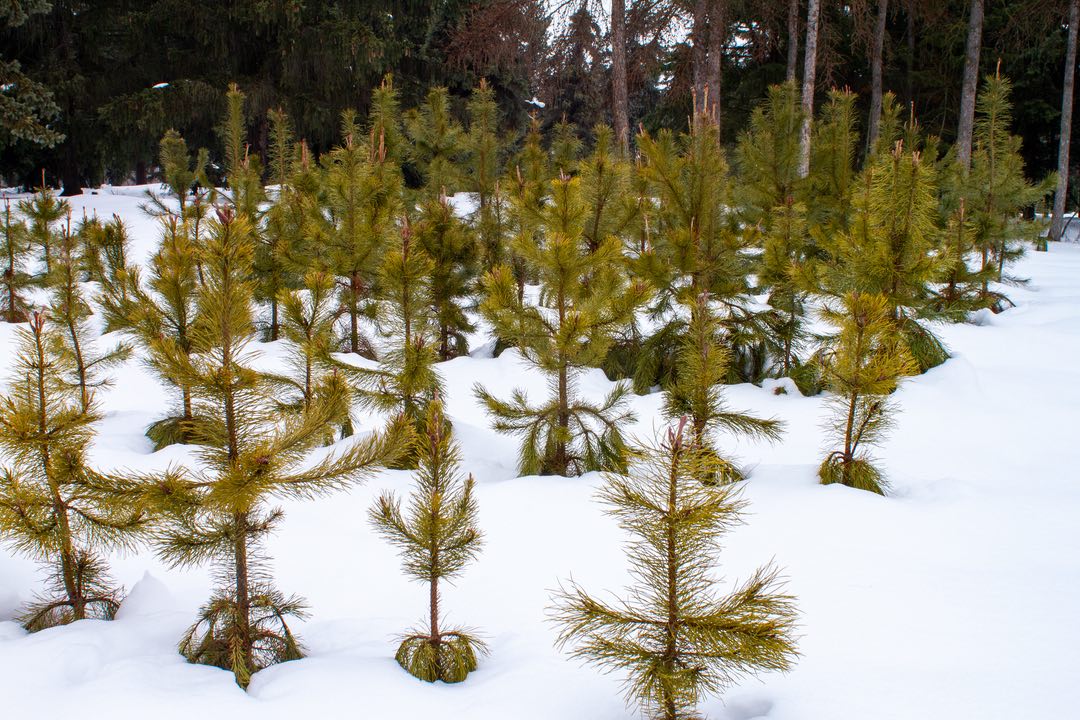
Photo © Lauren Oakes
So that’s how I found myself touring a giant freezer packed with boxes of seedlings in Canada, then talking to scientists and sorting out where climate-based seed transfer fits into retrofitting our world’s forests. In many ways, British Columbia is well positioned to get out in front of climate change in its tree-planting efforts. Since 1987, all timber licenses on publicly-owned land have required restoration, perpetuating a cycle of annual plantings and generating science to inform action over the years.
Over 8 billion trees have been planted in British Columbia since 1950. Now, there’s the need to plant in harvest areas and also the need to restore recently burned areas. A government initiative is encouraging plantings for carbon, too. So, about 300 million seedlings await planting this year alone. But there’s still a greater demand for planting across the landscape than foresters will be able to tackle. From seed sourcing to collection and nursery cultivation to storage—the planting cycle takes about two years. It’s a military-like operation requiring tremendous coordination on an enormous scale.
Based at the Kalamalka Forestry Research Centre in Vernon, Greg O’Neill is the lead geneticist behind British Columbia’s climate-based seed-transfer system. At his office, he explains how climate will determine how far foresters will need to go when procuring seed. Seed zones will no longer be restricted to a particular geography by stagnant boundaries on the landscape; they will shift with the changing climate.
To make this work, O’Neill and his colleagues across the province are drawing upon decades of research—some 1,400 genetic field trials, 550 provenance trials, and a ten-year study of tree species’ climate tolerance. Prior to 1990, the provenance trials focused on finding sources of good seed and assessing the impact of transferring seed from one location to another. (Provenance means “origin” and refers to a population of trees that come from a particular location.) Those trials proved to be ideal laboratories to test the effects of climate change on seedling establishment and growth, based on the climatic conditions of the seed provenances.
With that data in hand, O’Neill calculates what he refers to as migration distance, an effort to compensate for the evolutionary lag between the climate under which the trees evolved and the climate they’ll face in the future. In the practice of planting, it’s the climate-informed distance between where the seed came from and where the seedlings should go.
“The mean annual temperature in Vernon is about eight degrees [Celsius],” O’Neill tells me, “but the trees in Vernon evolved in a climate that was six and a half degrees. If you’re a forester planting in Vernon, you wouldn’t use Vernon seed. You’d go to south to Osoyoos, where the climate is nine and a half degrees, to procure your seed because those trees evolved in a temperature of eight degrees.”
He grabs a sheet of loose-leaf paper and draws two overlapping ovals in black pen. Their intersection creates two crescent moons—one to the north and one to south. “We can collect seed here, but we’ve lost the ability to plant that seed here,” he says, pointing to the sliver of landscape on the southern end. He shades it to indicate unsuitable conditions under future climate. The challenge is that seedlings planted in that southerly area of the current seed zone would likely do well at establishment but then struggle 70 years later, maladapted to temperatures that will be even warmer. Climate-based seed transfer matches seed from the climate of the mid-twentieth century with the expected climate 20 years later; that’s when the planted forest is at one-quarter of its lifespan for commercial forestry. If the time frame for the management goal—timber harvest, in this case—were different, the planting strategy might be as well.
In the past, the term of choice was restoration, a concept that could be informed by what once was. Now, we might move to a new term, renovation, which will be guided by what we value most in those original systems, even if we can’t have them in the future exactly as they were.
With a red pen, he draws an arc that slices through the planting area to the north. “Sometimes this new area of suitable habitat is outside the species range.” And that’s where moving trees gets more controversial. “The minute you say assisted migration,” O’Neill tells me, “there’s this outcry of playing God.”
To facilitate the survival of the future fittest, B.C. foresters have focused primarily on shifting populations within their current species range, with a couple of exceptions. But new research is aimed at assessing the habitat suitability for species under future climate scenarios. Moving species outside their current range could become the next standard of practice. Foresters would then decide which species to plant first and then look for the appropriate seed source, informed by the migration distance.
From the research center in Vernon, we trek outside through the snow to see a demonstration project planted outside the offices. Standing before rows of interior spruce and lodgepole pine, O’Neill explains that the seed sources span about ten degrees of latitude and capture a wide range of mean annual temperatures. The trees sourced as seed from warmer regions tower over the others after only four years of growth. Looking at the trees standing before us, any visitor could clearly see that where the seeds came from matters and that some species will do better than others.
I ask O’Neill how this initiative addresses diversity, given the greater resilience of more-diverse forest ecosystems to disturbances. As an ecologist, I know diversity comes in many forms—from structural (a mixture of small, medium, and large trees) to compositional (the species assemblages) to genetic. If you’re collecting seeds to cultivate and plant, maintaining the genetic piece is critical. O’Neill says that the progeny trials in the province’s tree-breeding programs have helped ensure this diversity by carefully tracking parents. The number of parents at any orchard in B.C. may be smaller than the number in a naturally reforested area, but the genetic diversity of the offspring can be higher. That’s because the parents originate from many disparate stands. Essentially, the process mates individuals that often wouldn’t have mated otherwise.
Not all tree-planting initiatives around the globe will have the benefit of so much data nor such an extensive network of orchards for sourcing seed. Managers will not only need to decide which species to plant and where, but will also face intensifying debates as they experiment with nonnative species plantations that can sequester more carbon in the near term.
Public sentiment, as well as engagement in restoration activities and climate-informed planting strategies, is another force that will shape the forests of the future across the globe.
Think of assisted tree migration as rungs on a ladder. The first step, assisted population expansion, means taking seed from the south end of the species’ range and transferring it north within its range. Next up is assisted range expansion—moving species outside their current geographic range but still within a climatic one. Finally, exotic translocation takes it one step further: across continents or far distances, introducing species to others they haven’t interacted with before—as far as we know.
With each step up, comfort levels can fall. A 2018 study led by Guillaume Peterson St-Laurent examined public support for reforestation efforts in B.C. The researchers found that most respondents supported, or strongly supported, assisted migration within range. Opposition increased when considering planting outside range and rose even more for reforesting with nonnative species. The same general pattern was observed in the expert community. Yet other research has shown those views to be malleable. As climate change forces more people to consider what values they are trying to sustain, letting go of such firm boundaries between inside and outside range, native and nonnative, may become more common practice.
This is already playing out in the United Kingdom, where the government wants to sequester more carbon. But foresters, conservationists, and citizens are divided on the best planting strategy. John Weir, a forester and an adviser on woodland creation and resilience for Forestry Commission England, says, “We should be looking for a balance between very fast-growing species—which are not native because we don’t have fast-growing nonnative species—and native forests.” Some advocate creating more native forests that can stand and hold carbon long-term, eventually becoming the ancient forests of the future. Others want to establish nonnative timber plantations that can be harvested so that the carbon is sequestered in wood products. Eleanor Harris, policy researcher for Confor, the UK Confederation of Forest Industries, says, “There’s growing recognition that we need both.”
It sounds great to be cautious; don’t move this there or this here. But what we also know is that if we don’t do anything differently, what we’d typically plant won’t make it.
Heidi Dungey, a tree-breeding expert and forest geneticist in New Zealand, agrees. “Looking toward the future, we’ll need to start thinking of forests—at least some of them—as farming for carbon.” Currently, most of New Zealand’s plantations are exotic. But the One Billion Trees
Programme, launched in 2017, is instigating changes. Its goals—to plant the right trees, in the right place, for the right purposes—are also sparking further research. Inspired in part by efforts in British Columbia, Dungey and her colleagues at Scion, a Crown Research Institute, are working to develop a network of trials for native and nonnative species to inform future plantings. But shifting seed zones for populations of native species in the years to come will hinge on public sentiment and engagement—mainly support from and collaboration with New Zealand’s indigenous Maori people, who hold rights to biological resources such as local, native seed.
Dungey says, “We can also get more out of forests than just carbon. People hunt in
our forests and feed themselves from our forests, so we need to consider a suite of factors as we determine what to plant and assess their benefits over time.” She says the big question for the forests of tomorrow is not just about what constitutes the best carbon forest. It’s also about what will be the best types of forest when we’re no longer a petroleum-based society but one needing forests that offer other services, too.
Climate change is shifting the goal posts for forest restoration—perhaps sooner than we ever imagined. Undoubtedly, there will be curve balls. Trees likely to survive the future climate may still face a gamut of unpredictable challenges. In the early 2000s, trees in a research trial designed to test for the influence of climate on lodgepole pine across B.C. were severely attacked by Dothistroma needle blight, a fungal infection that causes defoliation. The trial site containing the largest trees had historically experienced some of the wettest weather, but when the weather became even wetter and warmer those trees suffered some of the greatest losses. In another study, populations of limber pine known to be resistant to blister rust became more vulnerable during drought conditions. Selecting for those more tolerant of drought conditions, in theory, could mean unforeseen consequences with susceptibility to disease.
“It sounds great to be cautious; don’t move this there or this here,” says Alex Woods, a forest health scientist in British Columbia. “But what we also know is that if we don’t do anything differently, what we’d typically plant won’t make it.” The solution, he and others say, is learning by doing—taking the best available knowledge, trying something different, monitoring, being ready to learn from mistakes, then trying again. The result may be a climate-ready mélange of green across the Earth’s surface, where we’ve done everything possible to protect the remaining intact ecosystems and rebuild the degraded ones—perhaps making the forests of tomor row a little bit better than what nature would do alone.
Suzanne Prober at CSIRO might capture this thinking best. She and a team of scientists recently proposed the use of a new term—renovation—to describe ecological management and nature conservation that actively allows for change and accommodates characteristics that differ from historical states. In the past, the term of choice was restoration. Restoration, she says, could be informed by what once was. Now, we have to make hard decisions about what we’re working toward and what services we want to sustain from our forests in the years to come. Renovation will be guided by “what we value most in those original systems, even if we can’t have them in the future exactly as they were.”
This article was first published in The Anthropocene (2020)
Lauren E. Oakes, PhD is a conservation scientist with the Wildlife Conservation Society and an Adjunct Professor in the Department of Earth System Science at Stanford University.

As Ireland transitions from the rich, smoky scent of peat-burning to a more sustainable future, its olfactory heritage is evolving. What will become the next iconic aromatic symbol of Ireland?
Click to watch the documentary trailer.


